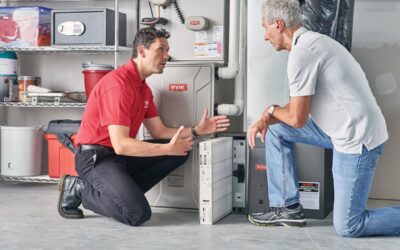When you have a regular routine that involves going to work each day, you also tend to establish something of a routine in terms of what to expect with your monthly energy bill. This is true even when you live with other people, whether they are roommates or family members. Some or all of you are away at work for six to ten hours a day, so you know what your utility costs will be, within reason, each month. If you all find yourselves stuck at home with nowhere to go, this often turns into a lot of energy use through more lighting, cooking, heating or cooling your home, bathing, lounging in front of the television, or streaming online content with smartphones, tablets, laptops, or desktop computers.
The sticker shock of a significantly higher energy bill can come as a surprise to many people because we simply don’t realize how much energy we expend each day to perform what we see as normal routines or activities. The problem is that when you are now spending more or all of your time at home, your energy use now has to find a new “normal” that you didn’t expect.
Here are a few ideas and tips for keeping your energy consumption low when you are staying at home, voluntarily or involuntarily, and making sure your monthly utility bills stay as manageable as possible.
Making the Most (or the Least) of Natural Light
When and where you can, make the most of natural light from the sun each day. Direct sunlight can often cause an increase in the temperature of a room, but you can open the blinds or drapes for those windows that are not allowing direct bolts of sunlight to stream through. By using the sun’s natural lighting, you can forego the more costly usage of artificial indoor illumination provided by lamps and overhead lighting. Keep lamps and other lighting turned off unless it is truly needed, and use part of the next tip below to reduce the energy consumption for the lighting you do use.
Use Energy-Efficient Fixtures and Light Bulbs
You might not think of a low-flow shower head as much of an energy-saving feature, since the obvious savings is only in terms of the amount of water used when bathing, but this type of appliance modification has an additional benefit, as well. Low-flow shower heads (or any other type of fixture that uses household water sources) also reduce the amount of energy used to heat water because they reduce the overall volume of hot water used in the first place. You can also change your home’s light bulbs and power strips to more energy-efficient types and models, which help regulate and reduce the energy used when you have to stay plugged in and powered on.
Unplug Devices When They are Not in Use
With more electrical devices staying home with their owners, there will naturally be more things plugged in to power strips and wall outlets. Even when a device like a smartphone, laptop, or gaming device is not plugged in and powered on, these charging or power cords can still slowly seep energy. Make sure you unplug the cords and cables when you aren’t actively using or charging your energy-using items.
Optimize Food Storage and Preparation Options
The way you store and prepare your meals and their respective ingredients can have an impact on energy use, even though it is one that is given less consideration than other tips for making your home more energy efficient. Over-stuffing a refrigerator or freezer makes the appliance work harder to keep everything cold, but you can change this by adding items to them over time instead of all at once. Additionally, the times of day and the methods chosen to prepare meals can raise the interior temperature of your home, which means your HVAC system must operate more often to maintain a comfortable interior climate. Whenever possible, use the microwave to warm foods, rather than an oven. If you do need to use the stove or oven to cook, try to do so in the late afternoon or early evening, during cooler parts of the day, so the temperature in your home does not rise to the point where the cooling system must activate.
Change Your Laundry Routines
With more people spending more time at home, your household laundry routines can go one of two ways. Either there will be more laundry being washed and dried because more attention is being paid to keeping your house orderly and organized, or less laundry will be done because everyone is going out less often, whether it is to work, out with friends, or to entertainment venues and retail stores. Rather than leaving the laundry to be done as it piles up, creating schedules for doing it and making small changes to the way it is done can make a difference with your household energy use. Washing clothes in warm or cold water, rather than hot, saves energy, as does drying your clothes outside on a clothes line if you have the option to do so. Drying smaller loads also saves energy, as the clothes get dry more quickly and less drying cycles need to be used.
Have Your HVAC System Serviced
As a final step, making sure your heating or cooling equipment is operating at peak performance is an often overlooked step you can take to improve the energy efficiency of your home. This includes basic DIY tasks like changing the filter and making sure the ducts are clean and free of obstructions. You and your housemates or family members can also work together to keep the thermostat adjusted to a setting that keeps everyone as comfortable as possible without overworking the HVAC equipment to the point of failure.
If you are staying home with the rest of your family or a roommate, have a house meeting with those who share the bills and discuss the great ideas and options listed here for keeping your energy use and utility bill as low as possible. Make sure the energy efficiency plans are also shared with anyone in your household who may not contribute to bill-paying but does contribute to using the utilities, as well. Small changes to your regular habits can make significant differences in the amount of energy you use and the corresponding monthly cost that comes along for the ride.




